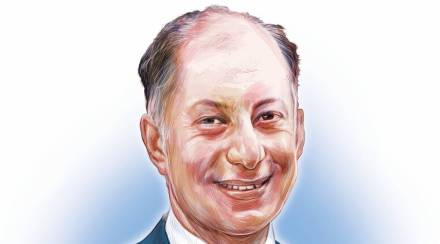To most people going about their quotidian tasks, other than a few prayerful tweets on nationalism, discussions about India have largely been dismissed as a nation that abounds in argumentative people with great promise but tied down by their struggles. ,
Naushad Forbes, the co-chairman at Forbes Marshall, a leading provider of energy conservation and automation solutions for the process industry, apparently thought differently. The former president of the Confederation of Indian Industry or the CII to many of us, chose to dig deeper and brought out a highly readable book titled ‘The Struggle And The Promise” – Restoring India’s Potential.
For those who eschew reading 300 odd pages, he made life even simpler. As part of a public lecture series at the Administrative Staff College of India or just the ASCI in Hyderabad on a rainy September 6th Tuesday evening, spoke about his attempt in the book. It is, he says, really about active engagement and discussion on key questions concerning many and in especially on ways to ensure the country is able leverage its potential.
Also read| Private sector must lead economy, industry must be critical of govt if needed: Naushad Forbes INTERVIEW
From his vantage point and from his days at the CII and having led several Indian industry delegations abroad, he says many globally want India to succeed. However, he does remind many of his counterparts abroad that global investors would do well to see India as long-term play and not seek returns in narrowly defined timeframes. “India is not a place for quick fixes,” he says and therefore to truly reap the fruits of investment, one would need to stay committed for the long-run.
To get to leadership and realise its potential, people, both in the Indian industry and in the government, will need to commit themselves to doing a few things. Crucial among these is the need to grow productivity and drive economic growth. For this, it is critical that Indian industry gets to invest in research, be more innovative and more independent.
Also read| The first step for recovery is to create more jobs and put enough money into people’s hands: Naushad Forbes, co-chairman, Forbes Marshall
The total national investment in research and development (R&D) in India ranges between 0.6 and 0.8 per cent of the GDP. Of this, the in-house R&D investment by Indian industry is about 0.3 per cent (though some other industry leaders have calculated to as low 0.1 per cent). “The world average is 1.5 per cent,” says Forbes. Therefore, “we need to scale our investment by a factor of 5 to match the world average and by a factor of 6 if we are to match China,” he says. That is because in China it is 2.5 per cent of a GDP that is five-times bigger than India and therefore, Forbes quite rightly argues that “we actually should be 20 times what we do.”
Making interesting, even if somewhat depressing, comparisons, he points out that India does not figure in the top 25 R&D firms globally. However, among the top 2500 industry investors in R&D, there are 25 from India. The United States leads with 800 but then this number has stayed still for the last seven years. In comparison, China today has 600 as against 300 seven years ago.
Investment in research- both public and private-was only one among the several elements he touched upon. Albeit on public investment in research, it was more about direction and destination.
The other important element, Forbes touches upon is on the role of state and the need to invest more in state capacity solutions with focus of the state largely on primary education, primary health, criminal justice system, financial regulations and the tax system.”
To a question from Financial Express Online on the key struggle and promise, he says, “I see the key promise in the large aspirational hungry population and one that is very diverse and keen to learn and therefore imperative to invest in improving the education outcomes.” The key worry at the moment is around social cohesion as we could be putting our future at risk by having many disaffected.
